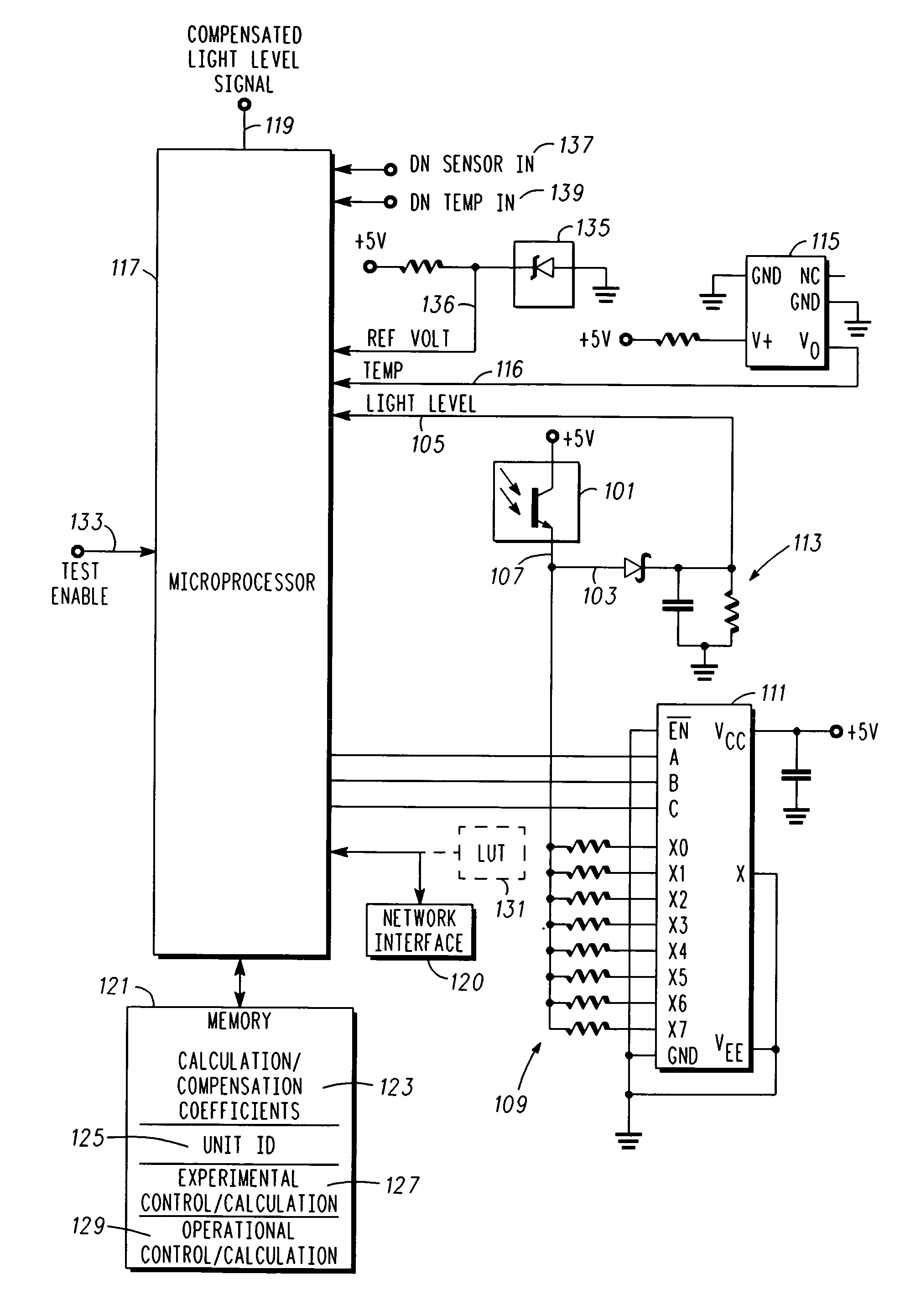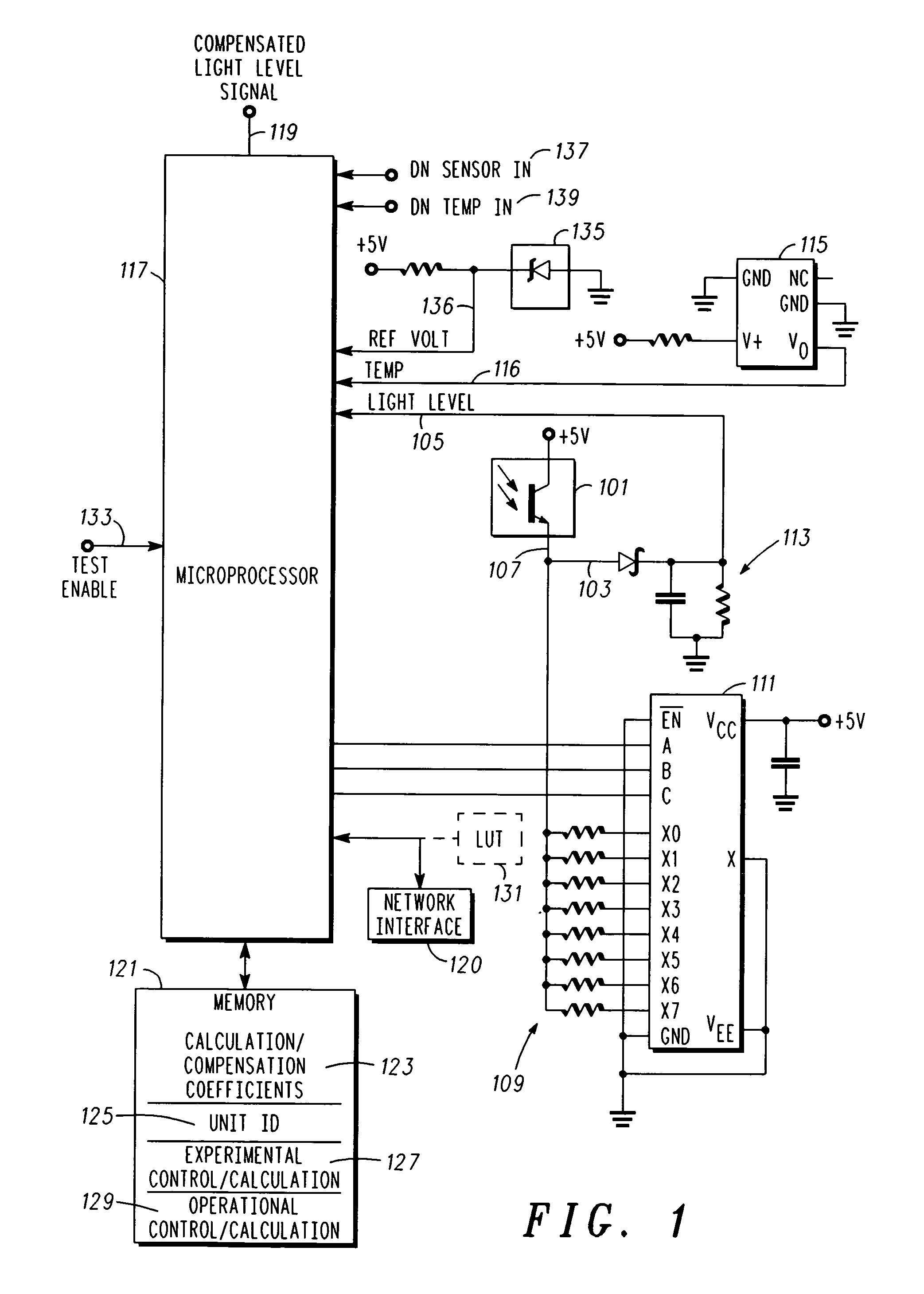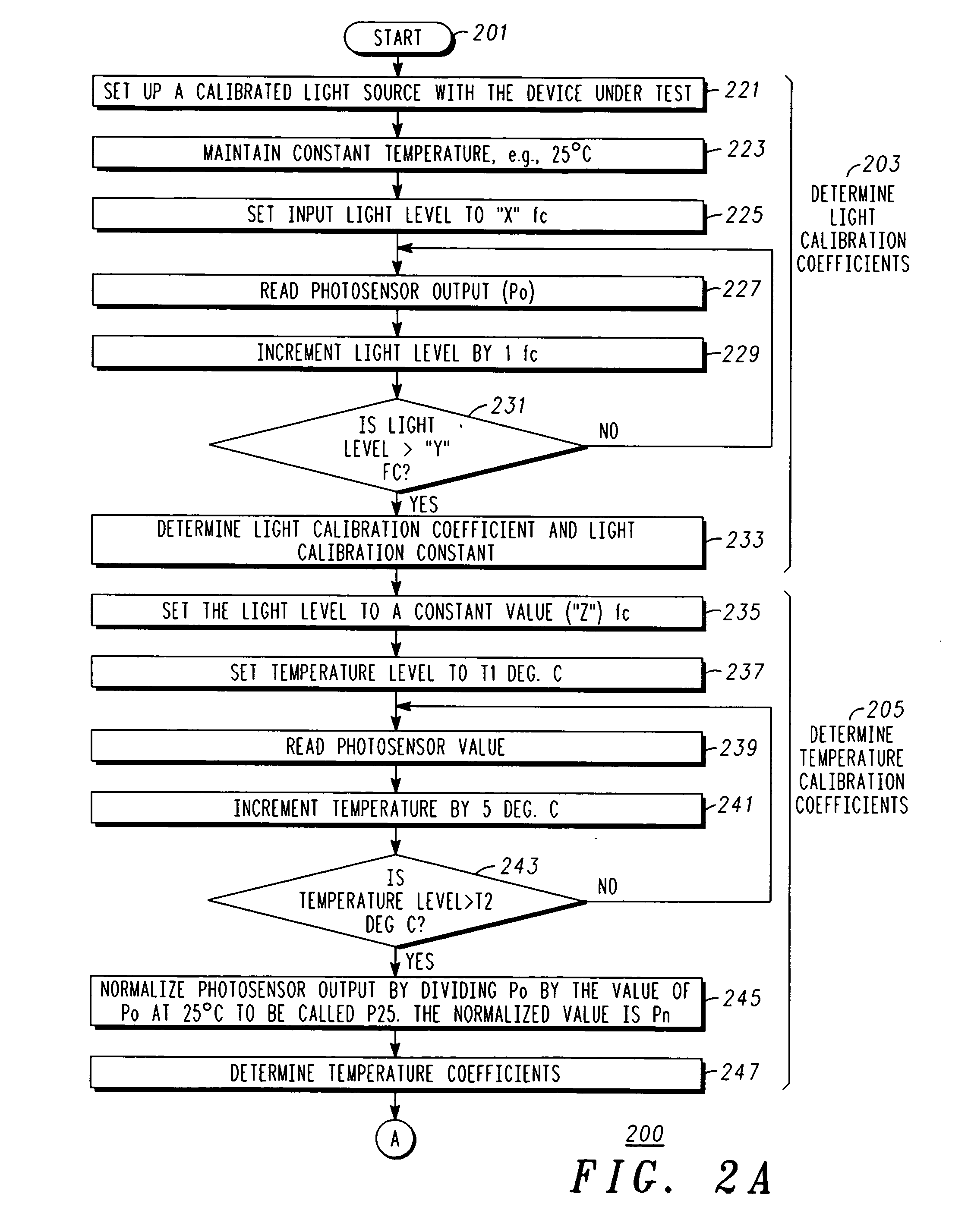Compensation for photo sensor
a technology of photo sensors and compensating tubes, applied in the field of photo sensors, can solve problems such as inability to use in situations that require repeated operation, silicon cells or sensors, and inability to adapt to changes
- Summary
- Abstract
- Description
- Claims
- Application Information
AI Technical Summary
Benefits of technology
Problems solved by technology
Method used
Image
Examples
Embodiment Construction
[0011] In overview, the present disclosure concerns accurate light level sensing using, e.g., a photo sensor, and more specifically techniques and apparatus for compensating such photo sensors and associated photo cells for device and assembly variations as well as environmental variations in order to provide accurate light level readings. The photo sensors are typically arranged and constructed for facilitating control of other systems, e.g., lighting systems and the like, where ambient light levels or actual light levels, e.g., from an associated lamp or the like, may be used pursuant to control of the associated system. More particularly various inventive concepts and principles embodied in methods and apparatus, for determining or utilizing compensation parameters or coefficients to provide a compensated signal indicative of an actual or absolute light level will be discussed and disclosed.
[0012] The systems of particular interest may vary widely but include outdoor and indoor ...
PUM
 Login to View More
Login to View More Abstract
Description
Claims
Application Information
 Login to View More
Login to View More - R&D
- Intellectual Property
- Life Sciences
- Materials
- Tech Scout
- Unparalleled Data Quality
- Higher Quality Content
- 60% Fewer Hallucinations
Browse by: Latest US Patents, China's latest patents, Technical Efficacy Thesaurus, Application Domain, Technology Topic, Popular Technical Reports.
© 2025 PatSnap. All rights reserved.Legal|Privacy policy|Modern Slavery Act Transparency Statement|Sitemap|About US| Contact US: help@patsnap.com



